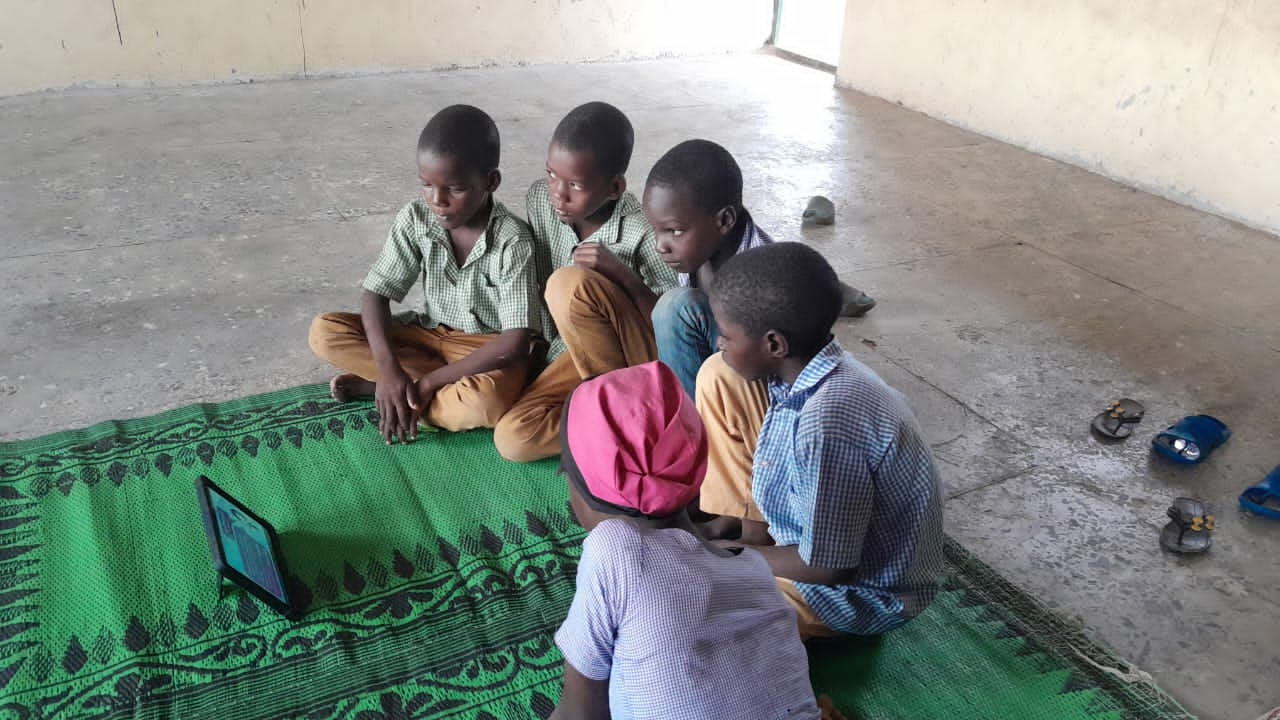What We Do
Pillar 1: Reduction in the Number of Out-of-School Children
Our focus on equity drives this results area, aiming to ensure more equitable allocation of state education resources. Specifically, we work towards improving learning conditions in the most disadvantaged schools and providing opportunities for students to transition to junior secondary education in communities without junior secondary schools. Additionally, our program incentivizes the development of a mechanism in each state to ensure the equitable distribution of resources beyond our intervention.

Disbursement-Linked Indicator:
State infrastructure budget allocated to underserved communities to improve learning conditions in primary schools and improve access to junior secondary schools.
This DLI consists of two key results:
Disbursement-Linked Result 1: Development of school network
States to develop a school network encompassing all primary and junior secondary schools, utilizing geo-coded school infrastructure audit data and population estimates for school-age children.
Disbursement-Linked Result 2: Underserved communities receiving grants for infrastructure development
- We aim to improve access to education for underserved communities by providing grants to School-Based Management Committees (SBMCs) through the State Universal Basic Education Board (SUBEB). The grants will be used to extend existing primary schools into junior secondary schools, add new classroom blocks, renovate primary school buildings, and provide separate WASH facilities for girls. We will measure success by the number of male and female students gaining access to schools with improved learning conditions. This initiative includes conducting infrastructure audits, prioritizing schools with the highest deficits, and allocating resources accordingly. By addressing infrastructure needs, we promote equitable access to basic education and create better learning environments for students.

Pillar 2: Enhancing Teaching Practices and Measuring Learning Outcomes
At TESS, we are committed to improving the quality of education by enhancing teaching practices and measuring learning outcomes. Our focus is to strengthen teachers' capacity in OAK states through a structured pedagogy program based on digital technology. By achieving this, we aim to foster effective teaching methods and provide valuable insights for policy formulation.
Disbursement-Linked Indicator:
- Structured Pedagogy Program for Effective Teaching.
Under this program, we have developed two key deliverables:
Disbursement-Linked Result 1:Empowering Teachers with Relevant Training:
- We provide teachers with comprehensive training modules tailored to their specific teaching needs. These modules, available in both digital and print formats, cover essential subjects and pedagogical skills. Through short practical training sessions, teachers gain in-depth knowledge of the curriculum and effective teaching strategies. Additionally, our cluster-based coaching sessions reinforce and enhance teachers' training, curriculum knowledge, and pedagogical skills.
Disbursement-Linked Result 2: Assessing Student Learning Outcomes
- To ensure continuous improvement, teachers conduct termly assessments for at least 80% of their students annually. These assessments, aligned with the curriculum, enable teachers to gauge students' progress and adjust their teaching accordingly. Our digital platform facilitates the grading and analysis of assessment results, providing valuable insights for teachers and School Pedagogical Support Officers (SPSOs) to enhance classroom instruction. By implementing this program, we aim to achieve the following outcomes and impacts: Increased number of students benefiting from effective teaching practices.
- Regular student assessments that inform teaching adjustments and improvement.
- Individualized reports provided to teachers by SPSOs, based on coaching interactions and assessment results, guiding them to enhance their teaching practice.
Pillar 3: Improving Teacher Development and Making Education Expenditures Transparent and accessible For Policy Formulation
The objective of this expanded results area is to reduce the overall unit cost of education provision through improved teacher deployment practices and improved transparency of education spending data. This will be achieved through the following Disbursement Linked Indicators and Disbursement Linked Results:

Disbursement-Linked Indicator:
- Improved Teacher Deployment
Disbursement-Linked Result 1: Teacher Deployment Policy:
- States are required to develop and issue a State-level Teacher Deployment Policy that is aligned with overall basic education policies, stipulate merit-based recruitment policies and need-based teacher deployment policies, developed with adequate stakeholder engagement that shows transparency and prioritizes staffing rural primary schools with high PTRs with shortage of teachers, and prescribes location-based incentives for teachers deployed to hard-to-serve locations and rural areas with high PTRs.
Disbursement-Linked Result 2: Improved Teacher Deployment:
- States will be rewarded US$2,000 for each newly recruited teacher deployed to rural schools which have been identified as having a shortage of teachers specifically to those rural schools with a PTR greater than 70. Similarly, States will also be rewarded for redeployment of teachers from primary schools with a PTR below 30 to schools with a PTR above 70.
Disbursement-Linked Indicator:
- Improved Transparency in Education Spending
This DLI has two key results.
Disbursement-Linked Result 1: State Education Expenditures Accounts published:
- States are required to publish annual education expenditure reports compiled and approved by the State Accountant General. The report includes spending by administrative units in the education and training sector, including other Ministries, Departments and Agencies (MDAs); by economic classification such as capital and recurrent expenditures; by functions such as levels of education including pre-school, primary, JSS, Senior Secondary School (SSS), non-formal, post-secondary non-tertiary and tertiary.
Disbursement-Linked Result 2: SUBEB Expenditure Accounts by Program and Outputs published:
- States are required to publish SUBEB’s expenditures and outputs by program such as matching grants for infrastructure; Teacher Professional Development; Instructional and learning materials; Special needs education; Imbalance and good governance programs. The report should include the list of schools with their geo-coordinates, that benefit from SUBEBs’ investment. For each beneficiary school, the report should include information on infrastructure built or upgraded, training programs for teachers and number of teachers participating, number of instructional materials provided and number of students benefited.

